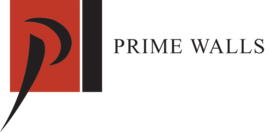All You Need To Know About Vector Images
What are Vector Images?
A vector image or graphic is a computer-generated image that uses lines, curves, and points that are based on mathematical equations to create the final picture. Below is an example of a vector image. Note the highlighted points and paths that make up the image of a bird.


Some of the basic file types for vector images include .ps (Adobe PostScript), .svf (Simple Vector Format), and .drw (vector file). Other common file formats for vector images using popular design software today include .ai and .art (Adobe Illustrator), .cd and .cdt (Corel Draw), and .org (OpenOffice).
What’s the Difference Between Vector Images and Raster Images?
Also known as a bitmap image, raster images are made up of small pixels on a grid. An image taken on a digital camera or phone is an example of a raster image. Each individual pixel contains its own information, such as the color for that specific square.
Try seeing the difference yourself by opening up a raster image in Photoshop and zooming in. The more you zoom in, the more “pixelated” the edges and image becomes. Eventually, all you’ll see are individual colored squares that make up the image.

Because each pixel contains its own information, raster image files are typically much larger than vector image files. Compared to vector images, most of us are probably more familiar with raster image file types. These include .jpg, .gif, .tiff, and .png, to name a few. If you're using design software such as Adobe Photoshop, the raster file type would be .psd.
There are advantages to using raster images. Because each pixel contains information on color, subtle gradations or variations in color can be accurately represented. Photographs that feature more complex compositions or shapes are better suited to a raster format. Because of its reliance on pixels, raster images are resolution-dependant and far less flexible in terms of editing the overall size of the image.
What are the Advantages of a Vector Image?
Vector images are not limited by the restrictions of raster images. Designers can customize vector images to any size and easily select specific colors for specific areas of the image. For example, note the different areas of the bird on the vector image below. The flexibility of editing vector images is just one major advantage over raster images.

Another advantage of a vector image is that the edges and lines remain smooth regardless of how the actual image is resized. If you zoom in on a raster image, the edges are pixelated and blurry. In other words, you end up seeing each individual square or pixel, rather than a true close up of the overall image.
Since the composition of a vector image is made up of paths that are based on mathematical equations, zooming in or out of the image means you still maintain the original image. In other words, unlike a raster image, a vector image is completely scalable even when making it larger.
For example, consider a company logo. A vector file of the image may be resized many times to suit a variety of needs, whether it’s sizing it down for a small business card or making it much larger for a poster. Using a vector image, the logo maintains its crisp edges and resolution regardless of how much it’s shrunken down or enlarged.
Vector Images and Murals
When choosing vector images for your custom digital mural project, certain types of imagery work better than others. Because vector images can scale much better than raster images, this means text will always look high quality and easy to read, rather than becoming blurry. Images such as world maps or images that utilize a lot of text and lines work much better as a vector image than a raster image.
In addition, image categories that rely on crisp edges or lines function better as a vector file since upsizing the image maintains the smoothness of the lines. Some examples include geometric and non-abstract patterns.
See below two examples of 1:1 ratio sections of vector murals. 1:1 means it is the size of the mural you would see on the wall in real life. These images show about 1 foot of the overall mural. Notice how crisp the graphics are.

Vectors offer the most flexibility and affordability when customizing your mural, since very precise changes can be made with less effort, such as changing the color of a very specific area. An example of this would be changing the color of all of the rivers on a world map.
As mentioned above, photographs and other complex imagery function better as a raster image since color gradations and other small details can be captured pixel by pixel. Vector is less suitable for these types of images, which can also include illustrations and paintings.


